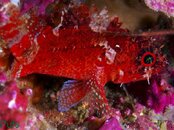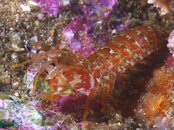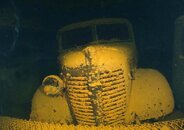Charles, You offer up the Ikelite fiber Optic adapter as an option and then state that you want to be able to shoot TTL or manual....well you are still stuck with Ikelite, as that is only a manual control option. Not sure why you would list that as you have repeatedly stated you wanted TTL.
As you don't care about being cost effective, then I would suggest that there are far better camera's and choices (including hard wiring strobes) Ikelte low end housings are about the same quality as the stock Canon (yes, it is deeper rated, but is very cheaply made). There are several excellent, well made housing you could have chosen. Ones that would offer optical or hard wired and TTL or manaul. I happen to own both canon and Ikelite cases and the only reason I would justify buying them is cost...which is a pretty good reason for some.
And for a camera with an attached lens, macro is a fuction of the camera (obviously not the case with an interchangeable lens camera). You can add a macro lens, but that is both time consuming and very limiting. Having some macro capability in the camera system is nice to have some of the time and essential every so often.


The first image above is the only known living picture of that fish, and the second is the only known image of that species. Both were in view for just seconds....and had I had to screw on a macro attachment, there would be no images.
I would suggest, that while the Ikelite housing does have a threaded front, it is by far, the cheapest plastic I have seen on any housing and it long term use is questionable.
Just my opinion, but there is a place for the canon housing, one for the Ikelite housing. Both work, and both will allow someone to take their camera underwater. But if you take that Ikelite housing, add a tray and arms and two Ikelite strobes, with hard wiring, There are now several other better housings/camera/strobe setups that will be more durable and take far better images. (keep in mind I like the G12, but it is not a Pany Gx-1 or a sony NEX5N)
Incorrect :
Fiber Optic Adapter for DS Substrobes
I'm not. I want versatility. I want to be able to shoot in TTL or manual and change my mind in the middle of a dive.
Macro is a function of the lens, not the camera. I use an Inon UCL-165 on my G12 for Macro.






